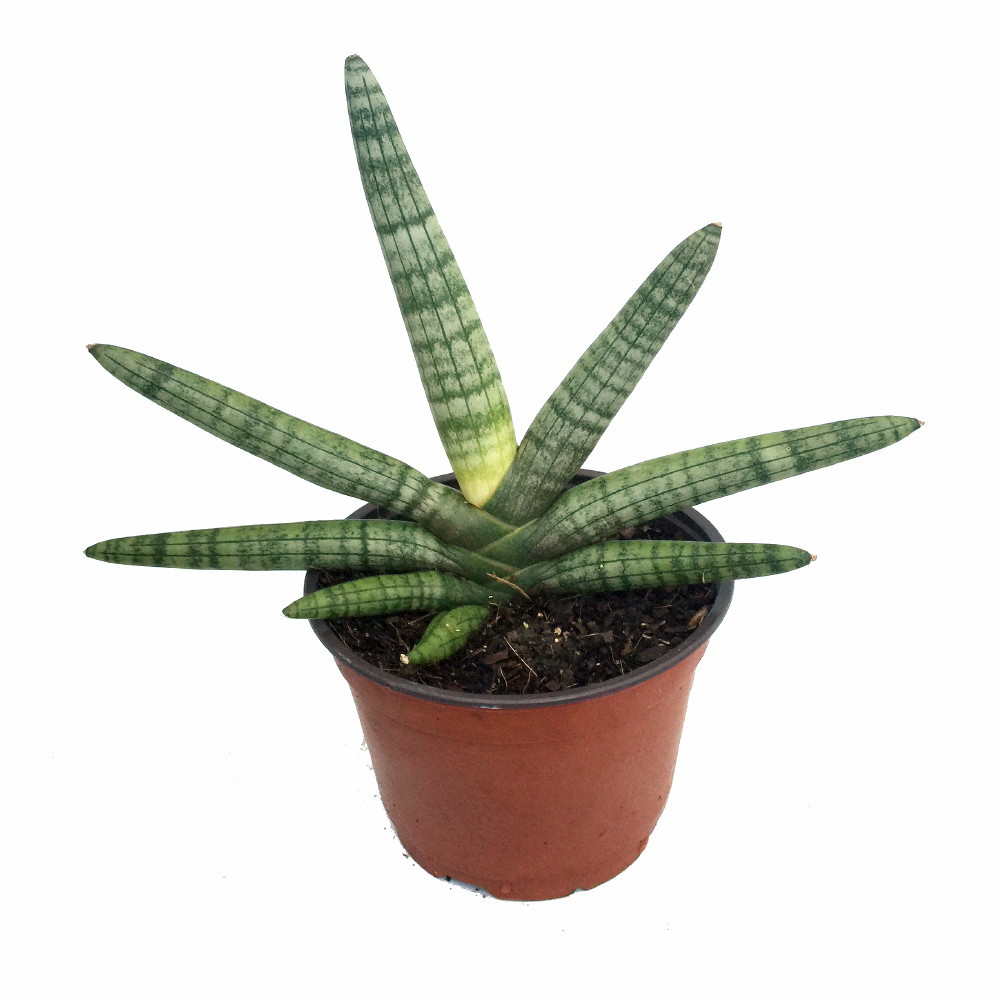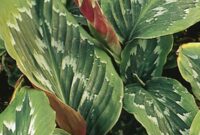Getting Acquainted with Starfish Sansevieria
Starfish Sansevieria, with its distinctive shape and ease of care, has become a favorite among plant enthusiasts and interior decorators alike.
This unique succulent, also known as Sansevieria cylindrica, is a striking addition to any indoor space, whether it’s a cozy apartment, a bustling office, or a chic restaurant. Its long, cylindrical leaves fan out like the arms of a starfish, giving it its charming name.
In recent years, Starfish Sansevieria has gained immense popularity as a low-maintenance houseplant. Its attractive appearance, coupled with its ability to thrive in various indoor environments, has made it a sought-after choice for both beginners and experienced plant lovers.
If you’ve recently welcomed a Starfish Sansevieria into your home or are considering doing so, you’re in the right place. This blog will delve into the common problems that can arise when caring for this beautiful plant and provide practical solutions to ensure its continued health and vitality.
So, whether you’re a seasoned plant parent or a first-time succulent owner, let’s embark on a journey to understand and conquer the challenges that can affect your Starfish Sansevieria, ensuring it flourishes in your space.
Let’s dive into the world of Starfish Sansevieria and learn how to overcome common issues that may arise along the way.
.
I. Yellowing Leaves and Their Causes
One of the most common concerns among Starfish Sansevieria owners is the appearance of yellowing leaves. While this can be alarming, it’s crucial to remember that yellowing leaves are often a sign that your plant is trying to communicate with you. Let’s delve into the various causes of yellowing leaves and learn how to interpret and address each issue.
A. Overwatering
Overwatering is a frequent culprit behind yellowing leaves in Starfish Sansevieria. These hardy succulents are adapted to thrive in dry conditions, so excess moisture can lead to stress and leaf discoloration. Signs of overwatering include soft, mushy leaves, waterlogged soil, and sometimes even a musty odor.
Solution:
- Assess soil moisture: Use a moisture meter or your finger to check the soil’s moisture level. If it’s wet or soggy to the touch, it’s likely overwatered.
- Adjust watering frequency: Allow the soil to dry out between waterings. Water your Starfish Sansevieria sparingly, typically every 2-4 weeks, depending on environmental conditions.
- Improve drainage: Ensure your pot has adequate drainage holes to prevent water from pooling at the bottom.
B. Underwatering
Ironically, underwatering can also lead to yellowing leaves, albeit for different reasons. When a Starfish Sansevieria doesn’t receive enough water, it may redirect resources away from older leaves, causing them to turn yellow and wither. Signs of underwatering include dry, shriveled leaves and soil that is bone-dry.
Solution:
- Establish a watering routine: While Starfish Sansevierias are low-maintenance, they still require occasional watering. Water when the top inch or two of soil is dry.
- Monitor humidity: If you live in a very dry climate, consider placing a shallow tray of water near the plant to increase local humidity.
- Proper pot size: Ensure your plant isn’t in an excessively large pot, as this can lead to prolonged drying times between waterings.
C. Nutrient Deficiency
Nutrient deficiencies can manifest as yellowing leaves, particularly if your Starfish Sansevieria isn’t receiving the essential nutrients it needs to thrive. Common deficiencies include nitrogen and iron, which can lead to chlorosis, a condition where leaves lose their green color.
Solution:
- Fertilize appropriately: Feed your Starfish Sansevieria with a balanced, diluted liquid fertilizer during the growing season (spring and summer). Follow the instructions on the fertilizer label.
- Choose the right soil: Ensure your plant is potted in well-draining succulent or cactus soil, which provides a good nutrient balance.
D. Pest Infestations
Pests can also be responsible for yellowing leaves. Common culprits include spider mites, mealybugs, and aphids, which can damage your plant and disrupt its nutrient uptake.
Solution:
- Inspect your plant: Carefully examine your Starfish Sansevieria for any signs of pests, including webbing, sticky residue, or visible insects.
- Isolate and treat: If you detect pests, isolate the affected plant to prevent further infestation. Treat the infestation with neem oil, insecticidal soap, or a gentle spray of water to dislodge the pests.
- Regular maintenance: Routinely inspect your plant for pests, as early detection and intervention are key to keeping your Starfish Sansevieria healthy.
By identifying the specific cause of yellowing leaves and implementing the appropriate solutions, you can help your Starfish Sansevieria regain its vibrancy and maintain its striking appearance. Remember, a little proactive care goes a long way in ensuring the well-being of your beloved succulent.
II. Root Problems: Overwatering and Root Rot
While the allure of Starfish Sansevieria lies in its striking foliage, it’s what’s beneath the surface that truly sustains its beauty and health.
The roots play a crucial role in nutrient uptake and overall plant stability. Unfortunately, overwatering and the subsequent development of root rot are common challenges that can threaten your Starfish Sansevieria’s well-being.
A. Identifying Overwatering Symptoms
Recognizing overwatering symptoms in your Starfish Sansevieria is essential for timely intervention.
Overwatering can lead to root rot and, subsequently, a decline in your plant’s health. Here are some telltale signs to watch for:
- Yellowing Leaves: As we discussed earlier, yellowing leaves can be an indicator of overwatering. When the roots suffocate due to excess moisture, they struggle to deliver nutrients to the leaves, resulting in discoloration.
- Wilting or Drooping: Overwatered plants often display wilting or drooping leaves. This is because the roots can’t provide the necessary support and hydration to keep the leaves upright.
- Soft and Mushy Roots: If you suspect overwatering, gently remove your Starfish Sansevieria from its pot and inspect the roots. Healthy roots should be firm and white. Overwatered roots, on the other hand, will be soft, brown, or black, and may emit a foul odor.
B. Treating Root Rot
If you’ve identified root rot in your Starfish Sansevieria, swift action is crucial to save your plant. Here’s a step-by-step guide on how to address this issue:
- Remove the Plant: Carefully take your Starfish Sansevieria out of its pot. Be gentle to avoid further damaging the roots.
- Prune Affected Roots: Using sterilized scissors or pruning shears, trim away any soft, mushy, or discolored roots. Ensure that you cut a few inches above the affected area to remove all damaged tissue.
- Treat with Fungicide: Treat the remaining healthy roots and the plant’s base with a fungicide or a mixture of water and hydrogen peroxide (1:3 ratio). This helps to kill any remaining fungal spores.
- Repot in Fresh Soil: Choose a clean, well-draining pot and fresh succulent or cactus soil. Repot your Starfish Sansevieria, making sure the roots are evenly spread out in the new container.
- Reduce Watering: After repotting, allow the soil to dry out completely before the next watering. This gives your plant a chance to recover without the risk of additional moisture-related issues.
C. Preventing Overwatering and Root Issues
Prevention is always better than cure when it comes to root problems in your Starfish Sansevieria. Here are some steps to prevent overwatering and root rot:
- Proper Pot and Soil: Ensure your plant is potted in a container with drainage holes and well-draining succulent or cactus soil.
- Water Sparingly: Stick to a watering schedule that allows the top inch or two of soil to dry out before watering again. Adjust this schedule based on environmental conditions and the season.
- Use a Moisture Meter: Invest in a moisture meter to accurately gauge when your plant needs water. This can help you avoid overwatering.
- Mind the Temperature: Be mindful of temperature conditions, as they affect the rate at which your plant uses water. Adjust your watering frequency accordingly during hot or cold spells.
By identifying the signs of overwatering, effectively treating root rot, and implementing preventative measures, you can ensure that your Starfish Sansevieria’s root system remains healthy and resilient, supporting the plant’s overall well-being and striking appearance.
.
III. Pests and Diseases: Diagnosis and Solutions
As a responsible plant parent, keeping an eye out for potential threats to your Starfish Sansevieria’s health is crucial.
Pests and diseases can sneak into your indoor garden, affecting the well-being of your beloved succulent.
A. Common Pests Affecting Starfish Sansevieria
- Spider Mites: These tiny arachnids are known for spinning fine webs on plants. They feed on plant sap, leaving stippled, discolored leaves in their wake.
- Mealybugs: Mealybugs are small, cottony pests that cluster on leaves and stems. They feed by piercing plant tissue and extracting sap, often causing leaves to curl and yellow.
- Aphids: Aphids are small, soft-bodied insects that congregate on the undersides of leaves. They excrete a sticky substance called honeydew, which can lead to sooty mold growth on your plant.
- Scale Insects: These pests attach themselves to plant surfaces and secrete a protective shell. They feed by piercing plant tissue, causing yellowing and weakening of the plant.
B. Identifying Symptoms of Diseases
Aside from pests, Starfish Sansevieria can also be susceptible to various diseases. Recognizing disease symptoms is vital for prompt treatment. Common diseases include:
- Fungal Diseases: These can cause brown or black spots on leaves, wilting, and overall plant decline.
- Bacterial Diseases: Symptoms may include leaf spots, yellowing, and a foul odor from the affected area.
- Viral Diseases: Viruses can cause mottled or distorted leaves, stunted growth, and reduced vitality.
C. Effective Pest and Disease Control Methods
Now, let’s delve into the effective strategies for controlling and preventing pests and diseases in your Starfish Sansevieria:
- Inspection and Isolation:
- Regularly inspect your plant for signs of pests or diseases. Isolate any affected plants to prevent the issue from spreading to others.
- Mechanical Removal:
- For small pest infestations, gently remove pests by hand or with a soft brush. Be sure to wear gloves.
- Insecticidal Soap or Neem Oil:
- Mix and apply insecticidal soap or neem oil following the manufacturer’s instructions to control common pests.
- Pruning:
- Trim and remove severely affected leaves to prevent the spread of disease. Disinfect your pruning tools between cuts.
- Natural Predators:
- Introduce beneficial insects like ladybugs or lacewings to your indoor garden to help control pest populations.
- Quarantine New Plants:
- Quarantine new additions to your plant collection for a few weeks to ensure they are free from pests and diseases before introducing them to your Starfish Sansevieria.
- Adjust Environmental Conditions:
- Ensure proper ventilation and avoid overcrowding, as these conditions can promote pest and disease development.
- Water Management:
- Avoid overwatering, as excessive moisture can create favorable conditions for fungal and bacterial diseases.
- Soil Sterilization:
- If you suspect soilborne diseases, consider sterilizing the potting mix before repotting your Starfish Sansevieria.
By staying vigilant, recognizing the signs of pests and diseases, and implementing these effective control methods, you can protect your Starfish Sansevieria from these potential threats and ensure it thrives in a healthy, pest-free environment.
.
IV. Light and Temperature Issues
The vibrant beauty of your Starfish Sansevieria is not only a testament to its unique shape but also to its adaptability.
However, like all plants, it has specific requirements when it comes to light and temperature. In this section, we’ll explore the challenges that your Starfish Sansevieria can face related to light and temperature.
A. Sunburn and Its Signs
While Starfish Sansevieria is known for its resilience, it can still experience sunburn if exposed to too much direct sunlight. The signs of sunburn include:
- Browning or Yellowing of Leaves: The tips or edges of the leaves may turn brown or yellow when exposed to excessive sunlight.
- Fading or Bleaching: Leaves may lose their vibrant green color and appear faded or bleached when subjected to intense sun.
B. Addressing Temperature Stress
Starfish Sansevieria is generally tolerant of a wide range of temperatures, but extreme conditions can cause stress to your plant. Here’s how to address temperature-related issues:
- Cold Stress: Exposure to cold temperatures can lead to damage, such as browning or blackening of leaves. Move your plant away from drafts and windows during chilly weather, and ensure it’s not in the path of air conditioning.
- Heat Stress: High temperatures can cause wilting, drooping, and leaf damage. If your indoor space becomes excessively hot, consider providing some shade or moving your Starfish Sansevieria to a cooler area.
C. Providing the Ideal Light and Temperature Conditions
Now, let’s explore how to create an environment that caters to your Starfish Sansevieria’s light and temperature needs:
- Light Requirements:
- Place your plant in bright, indirect light. It can tolerate some direct sunlight but should be protected from harsh afternoon sun.
- Rotate your plant occasionally to ensure even growth on all sides.
- Temperature Considerations:
- Starfish Sansevieria thrives in average room temperatures between 65°F to 75°F (18°C to 24°C).
- Protect your plant from drafts, as sudden temperature fluctuations can stress it.
- In colder months, avoid placing it near windows or heating vents that might expose it to cold drafts.
- Seasonal Adjustments:
- During the growing season (spring and summer), you can move your plant outdoors to enjoy filtered sunlight.
- In winter, reduce watering and shield it from freezing temperatures.
- Artificial Lighting:
- If natural light is limited in your space, consider supplementing with artificial grow lights, especially during the darker months.
- Observation and Adjustment:
- Regularly monitor your Starfish Sansevieria for signs of light or temperature stress. Adjust its placement as needed to ensure it receives optimal conditions.
By providing your Starfish Sansevieria with the right balance of light and temperature, you can ensure it remains healthy and vibrant.
Remember that these adaptable plants can thrive in a variety of conditions, so with a little care and attention, your Starfish Sansevieria will continue to delight you with its unique beauty.
.
.
.
source image: https://hirts.com/rare-boncel-starfish-snake-plant-sanseveria-almost-impossible-to-kill-6-pot/



